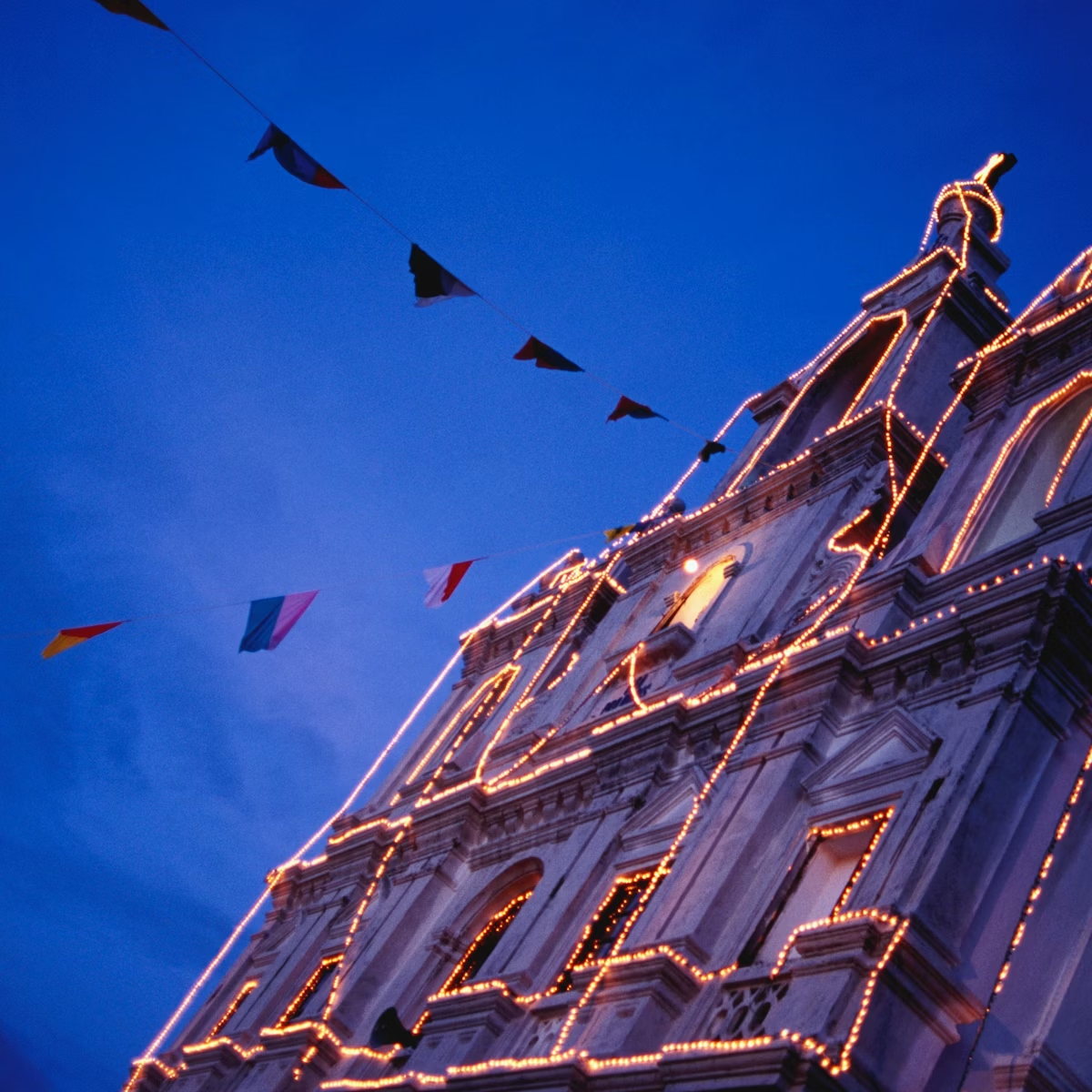Around 9km north of Ponda, this temple is one of the most visited of Goa’s Hindu temples, admirably combining two key features of Goan Hinduism: first, it’s dedicated to a solely Goan deity (in this case the local god Manguesh), and second, it exhibits the mixture of architectural styles that typifies the region’s temples.
The temple’s original location was on the south side of the Zuari River, near the present-day village of Cortalim. When the Portuguese took control, its ancient Shivalingam stone was brought to Priol and installed in a new temple (enlarged later in the mid-18th century), an effort that saw Hindus from Portuguese-held districts risking death, arriving in the dead of night to worship here. Today the temple has grown to encompass a substantial complex that includes accommodation for pilgrims and administrative offices.
Architecturally, Shri Manguesh shows the influences of both Christian and Muslim styles. There’s evidence of Christian influence in the octagonal tower above the sanctum, the pillared facade of the impressive seven-storey deepastambha (lamp tower), the largest in Goa, and the balustrade design around the roof, while the domed roofs indicate a Muslim influence. The tank (reservoir) in front of the temple is the oldest part of the complex. If you walk down to the right-hand side of the temple you can also see the giant raths (chariots) that are used to parade the deities during the temple’s festival, which takes place in the last week of January or the first week of February.
Manguesh, the temple’s god, is said in Goan Hindu mythology to be an incarnation of Shiva. The story goes that Shiva, having lost everything to his wife Parvati in a game of dice, came to Goa in a self-imposed exile. When Parvati eventually came looking for him, he decided to frighten her and disguised himself as a tiger. In horror, Parvati cried out ‘Trahi mam girisha!’ (Oh lord of mountains, save me!), whereupon Shiva resumed his normal form. The words 'mam girisha' became associated with the tale, and Shiva’s tiger incarnation, with time, became known as Manguesh. The Shivalingam left to mark the spot where all this happened was eventually discovered by a shepherd, and a temple was built to house it at the temple’s original location near Cortalim.





